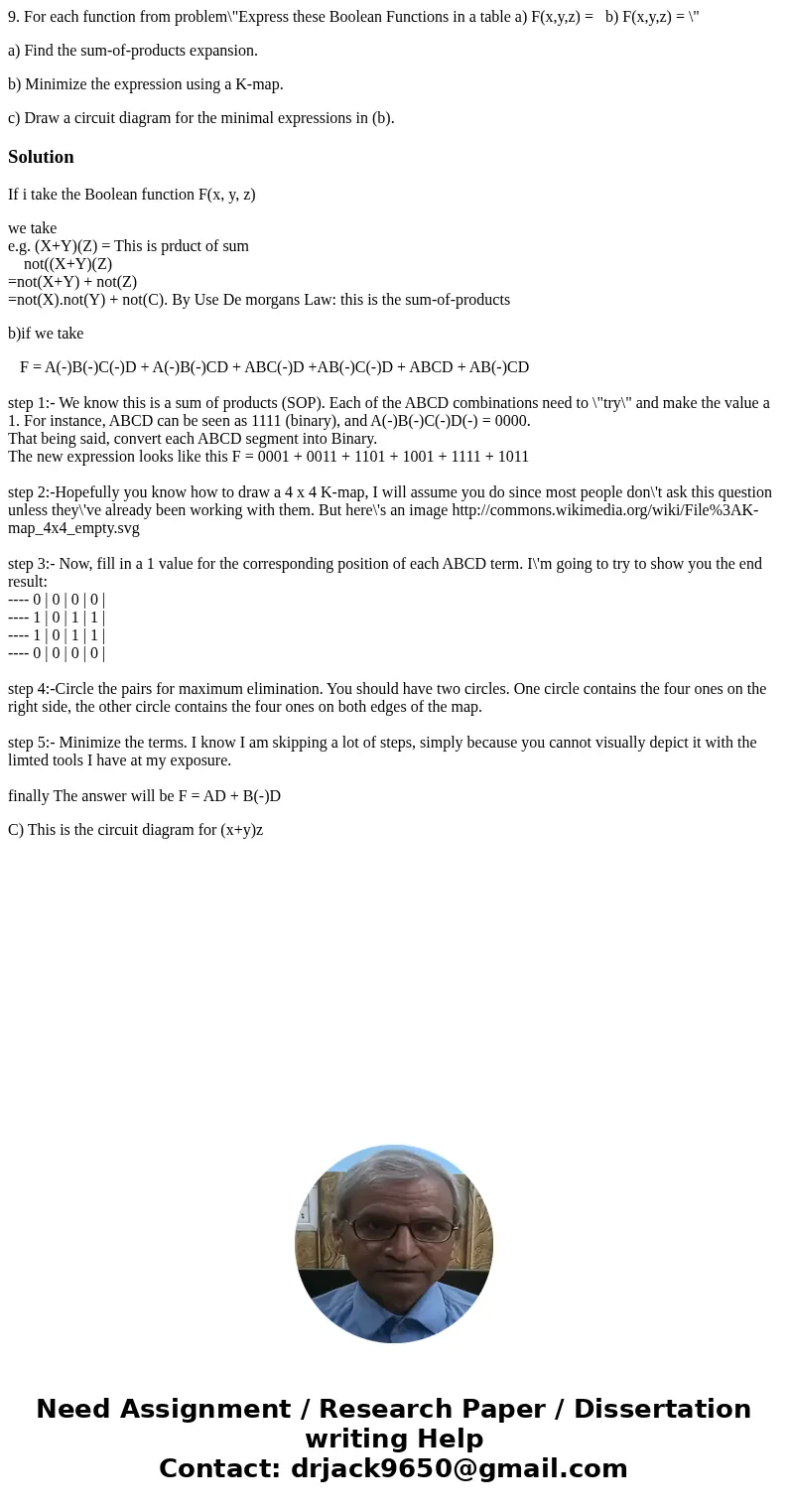9 For each function from problemExpress these Boolean Functi
9. For each function from problem\"Express these Boolean Functions in a table a) F(x,y,z) = b) F(x,y,z) = \"
a) Find the sum-of-products expansion.
b) Minimize the expression using a K-map.
c) Draw a circuit diagram for the minimal expressions in (b).
Solution
If i take the Boolean function F(x, y, z)
we take
e.g. (X+Y)(Z) = This is prduct of sum
not((X+Y)(Z)
=not(X+Y) + not(Z)
=not(X).not(Y) + not(C). By Use De morgans Law: this is the sum-of-products
b)if we take
F = A(-)B(-)C(-)D + A(-)B(-)CD + ABC(-)D +AB(-)C(-)D + ABCD + AB(-)CD
step 1:- We know this is a sum of products (SOP). Each of the ABCD combinations need to \"try\" and make the value a 1. For instance, ABCD can be seen as 1111 (binary), and A(-)B(-)C(-)D(-) = 0000.
That being said, convert each ABCD segment into Binary.
The new expression looks like this F = 0001 + 0011 + 1101 + 1001 + 1111 + 1011
step 2:-Hopefully you know how to draw a 4 x 4 K-map, I will assume you do since most people don\'t ask this question unless they\'ve already been working with them. But here\'s an image http://commons.wikimedia.org/wiki/File%3AK-map_4x4_empty.svg
step 3:- Now, fill in a 1 value for the corresponding position of each ABCD term. I\'m going to try to show you the end result:
---- 0 | 0 | 0 | 0 |
---- 1 | 0 | 1 | 1 |
---- 1 | 0 | 1 | 1 |
---- 0 | 0 | 0 | 0 |
step 4:-Circle the pairs for maximum elimination. You should have two circles. One circle contains the four ones on the right side, the other circle contains the four ones on both edges of the map.
step 5:- Minimize the terms. I know I am skipping a lot of steps, simply because you cannot visually depict it with the limted tools I have at my exposure.
finally The answer will be F = AD + B(-)D
C) This is the circuit diagram for (x+y)z

 Homework Sourse
Homework Sourse